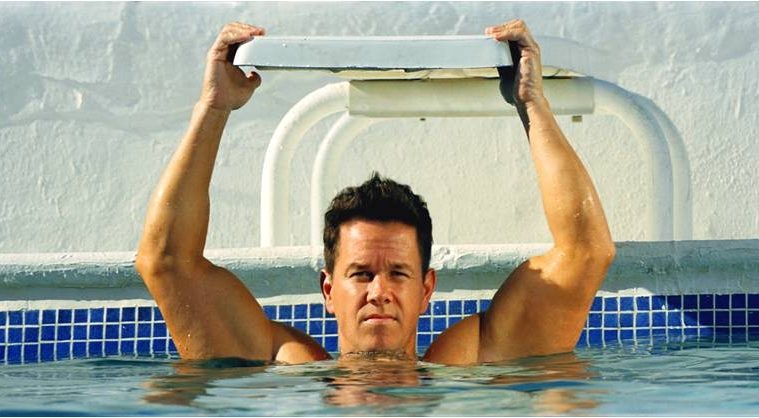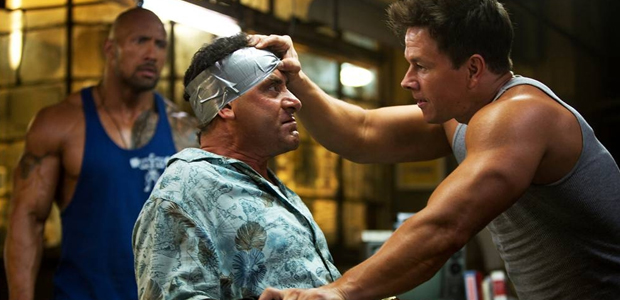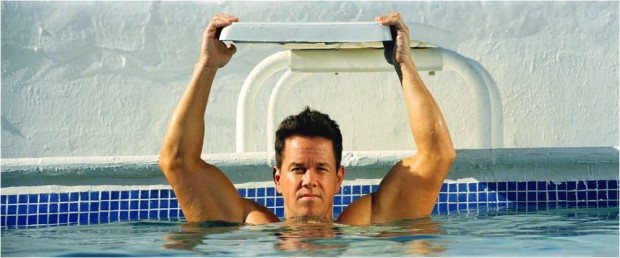
Pain & Gain, Michael Bay‘s outlandish, energetic new film, is based on a true story, which is surely a known fact to people who have seen the film: not only is there the requisite “based on a true story” title card placed near the beginning of the film, but there is, an addition, a more sly, knowing use of this technique later in the proceedings when yet another title card explicitly reminds us that, yes, this movie is “still based on a true story.” Such tricks are effective, and even rather natural considering the Bay-infused sense of humor with which the film operates, but I couldn’t help but think that this level of brashness might have a self-defeating effect on viewers, as if Bay’s recurring referencing of his story’s true-to-life roots would excite more impulsive skepticism than awed disbelief.
With that in mind, it’s worth emphasizing that Bay’s film does indeed stick closely to the facts of the real-life story. The specific source material here is a series of magazine articles written by Pete Collins for the Miami New Times. (The screenwriters assigned to adapt were Christopher Markus and Stephen McFeely, whose previous collaborations include You Kill Me and Captain America: The First Avenger.) Published in three parts over a three-week period—the first part was published on December 23, 1999, while the final one was published on January 6, 2000—the articles are sober, extremely dense, and entirely illuminating, painstakingly filled with background information and minute details. Collins himself, in a recent reflection he wrote in conjunction with the film’s premiere, stated that his piece “was the longest [one] to appear in these pages.”
Thankfully, Bay didn’t make his longest film—one of Pain & Gain‘s chief virtues is that it has the decency to be shorter than Bay’s numbingly drawn-out Transformers entries—but instead, in working with his writers, implemented an array of narrative techniques (frequent flashbacks, instantaneous jumps in time, voice-over that jumps from character to character) to pack in as much as possible within the designated 130-minute runtime. The resulting film isn’t entirely truthful—no, the victim did not run his kidnapper into a wall with a moving vehicle, and there’s no record of Daniel Lugo being inspired by a Ken Jeong-like motivational speaker—but is nevertheless more faithful to fact than most people would assume (especially considering the adolescent, muscled-up bent to the film’s tone). Here, then, is a list of ten of the most bizarre events that take place in Michael Bay’s Pain & Gain: five of them true, and five of them not.
Note: All quotes from here on out, unless otherwise noted, are taken from Collins’s articles.
Untrue
The Character of Dwayne Johnson

Certainly one of the film’s major talking points is the Paul Doyle character portrayed by Dwayne Johnson. Seen by many as something of a breakthrough performance for the actor (though I personally found him equally credible in this year’s Snitch), the role is full of lunatic-level transformations: whether you buy it or not, the shift from dedicated, born-again Christian to cocaine-addict stripper-lover is a spectacle to behold. In truth, it would appear that Johnson’s Paul Doyle is a mixture of two real-life personalities: Jorge Delgado, who was the gang’s third most-prominent member after Lugo and Doorbal; and Carl Weekes, whose history of prison, drug abuse, and finding Christianity supplies much of the inspiration for Paul Doyle’s personality.
Sex Toy Warehouse
Leave it to Michael Bay to decorate the film’s warehouse—which is the predominant location of the film’s centerpiece middle-section—with an abundance of male sex toys. Clearly, this wasn’t the case in real life: “[called] Speed Racer’s, the warehouse,” which was located in Hialeah and owned by Delgado, “was used as a storage facility and distribution center for Delgado’s various business interests.” I’m not sure Bay had to go as far as he did, but you can’t be upset at him for wanting to inject the locale with something a little more eye-catching than “business interests.”
The Arrest of Marc Schiller
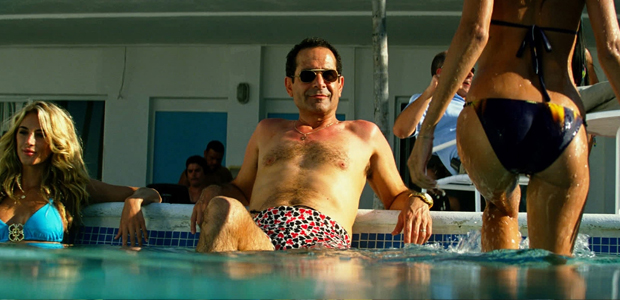
A cruel irony of the original story is that Marc Schiller, the real-life version of Victor Kershaw, was himself arrested only moments after the Sun Gym court case was finally finished. Throughout the trial, in fact, he had been on the eyes of the authorities, who were waiting until after the trial to book him for “a fraudulent Medicare billing scheme that generated somewhere around $14 million.” According to Collins, this is a crime punishable up to 25 years in prison, but a Miami New Times article written in at the beginning of April reports that Schiller is out of prison, “employed as an accountant in Boca Rotan,” and the author of a memoir called Pain & Gain: The Untold Story.
Girlfriend Swapping
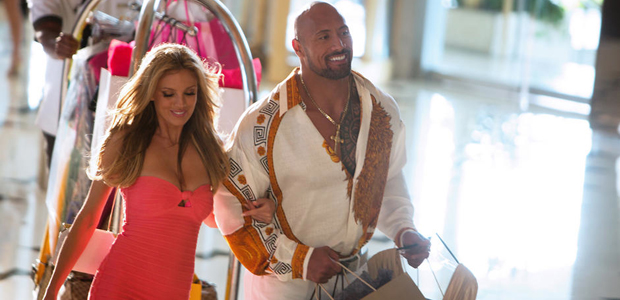
While Bar Paly‘s character is sufficiently loyal to Wahlberg’s Daniel Lugo during the first half of Pain & Gain, she has no qualms about swapping to Paul Doyle during the film’s second half. Lugo doesn’t really have a problem with this, either: he even points out this girlfriend-swapping to the local neighborhood kids as an example of admirable manhood. This is pure fiction, of course, as it appears that Paly’s real-life counterpart remained with Lugo throughout most of the ordeal, though the two did become separated when she at last learned that the whole CIA story was utter nonsense.
The Death of Frank Griga
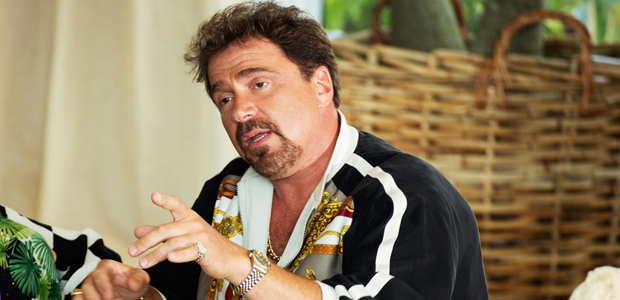
A particularly gruesome burst of violence takes place in Pain & Gain when Wahlberg’s character and Michael Rispoli‘s Frank Griga get into a heated physical fight, which results in Griga being killed by having his face crushed with heavy weights. While Griga did die that night, it was actually Anthony Mackie‘s Adrian Doorbal that was involved in the altercation and the weights-on-face collision is entirely invented: Griga was indeed “smashed above the ear with a hard, blunt object,” but his ultimate demise came about when Doorbal grabbed him by the neck and strangled him. Source-material sticklers, however, should take comfort in the fact that the animal-tranquilizer business that follows is true: the substance name-dropped in Collins’s articles is Rompun.
True
Halloween Costume Abduction
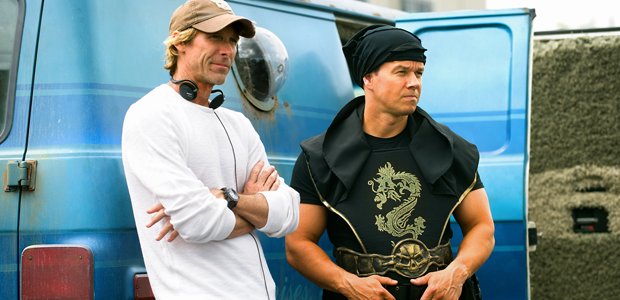
Bay mixed together a few separate events for this scene in the film, but the underlining idea of three men attempting to perform a kidnapping while wearing Halloween outfits is absolutely true. What’s interesting, though, is that the criminals’ behavior seems even more ridiculous in real-life than it was in the film. It took Lugo, Adrian Doorball, and the rest of the gang several attempts (around seven) to finally nab their target, and the incident with the ninja costumes never even took off: the gang called off the robbery and instead spent the night at a nearby strip club.
Coercion Through Faith
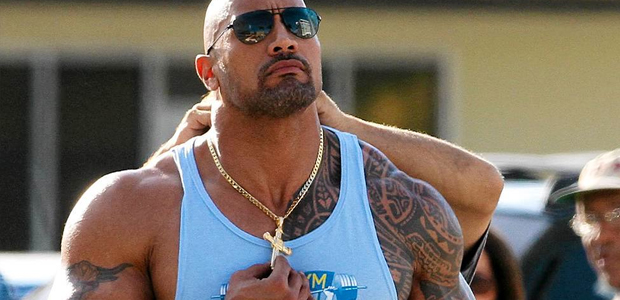
A typically offensive and stereotypical—though certainly not unfunny—example of the film’s sense of comedy occurs when the Sun Gym gang goes to a weapons shop to stock up on enforcements for their deadly plan. The clerk of the weapons shop, played by Patrick Bristow (who I recall being very funny on a couple episodes of Curb Your Enthusiasm), is presented as an even more hyper-religious person than Dwayne Johnson’s Paul Doyle, but that’s exactly why Bristow’s character, billed as the Spy Shop Clerk, is so quick to let the gang buy whatever the hell they want. The character portrait drawn in Collins’s articles is decidedly similar, saying that the shop was filled with “large banners reading ‘Jesus Saves’ and ‘God Is Love.'” And if you thought Johnson’s story about being a security officer for a Christian-rock group was invented out of thin air, well, that’s in the Collins articles, too.
CIA Cover Story
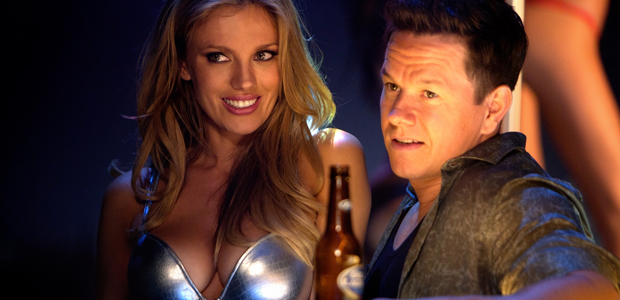
Bar Paly’s Sorina Luminata displays a tendency for trashy, poorly-considered behavior throughout Pain & Gain, but, even by her standards, the immediate willingness with which she accepts Lugo’s fake CIA cover story seems totally fabricated. Turns out it’s not: in Collins’s own words, “[a] fan of action thrillers, particularly James Bond films, she now had her own real-life man of international intrigue,” and she bought into the story from moment one. To make things even funnier, when Lugo’s partner-in-crime Adrian Doorbal moved nearby to make their partnership more convenient, Lugo’s girl had no trouble assuming that Doorbal was a CIA mastermind in his own right.
Incompetent Killers
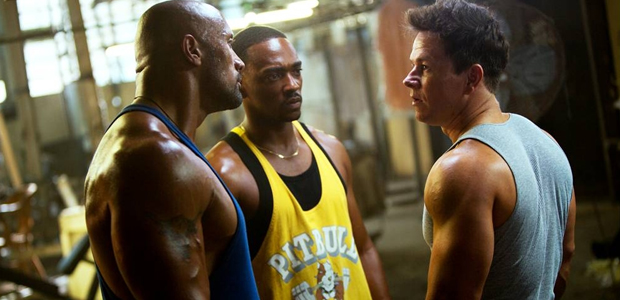
Though frequently funny, there’s nevertheless an inherent element of disturbance to Pain & Gain, considering the sheer depravity of what happens in the story. Perhaps no scene in the film better represents this mixture of foolishness and off-putting carnage than the gang’s pathetic attempt to kill Tony Shalhoub‘s Victor Kershaw. But it’s all there in the articles, from the “three days of forced drinking” to the ineffective staged-car-crash to the act of arson to the amazing sight of the victim escaping from the car, somehow still alive after being burned and beaten and boozed-up for days and weeks on end.
Breast-Implant Identification

By the closing sequences of Pain & Gain, viewers will know whether or not they’re picking up what the film’s putting down, and chances are that those who don’t like the film will downright scoff at the idea of a corpse being identified through information take from the body’s breast implants. But don’t blame Bay for making this stuff up: unlike, say, the unnecessary, shamelessly off-putting antics of Shalhoub’s hospital-patient companion, the breast-implant identification story is cold-stone truth. In a recent interview with Hollywood.com, TV judge Alex Ferrer (who resided over the real-life case, but was unable to appear in the film due to scheduling constraints) verifies this, with the stipulation that he “[doesn’t] know if it was the first [instance] in the country.” Collins, for his part, called it “the first time in Dade County” that a body had been identified this way.
What was your reaction to Pain & Gain‘s relationship to its source material? Are you surprised to learn that a bulk of these events are, in fact, very close to the truth?

